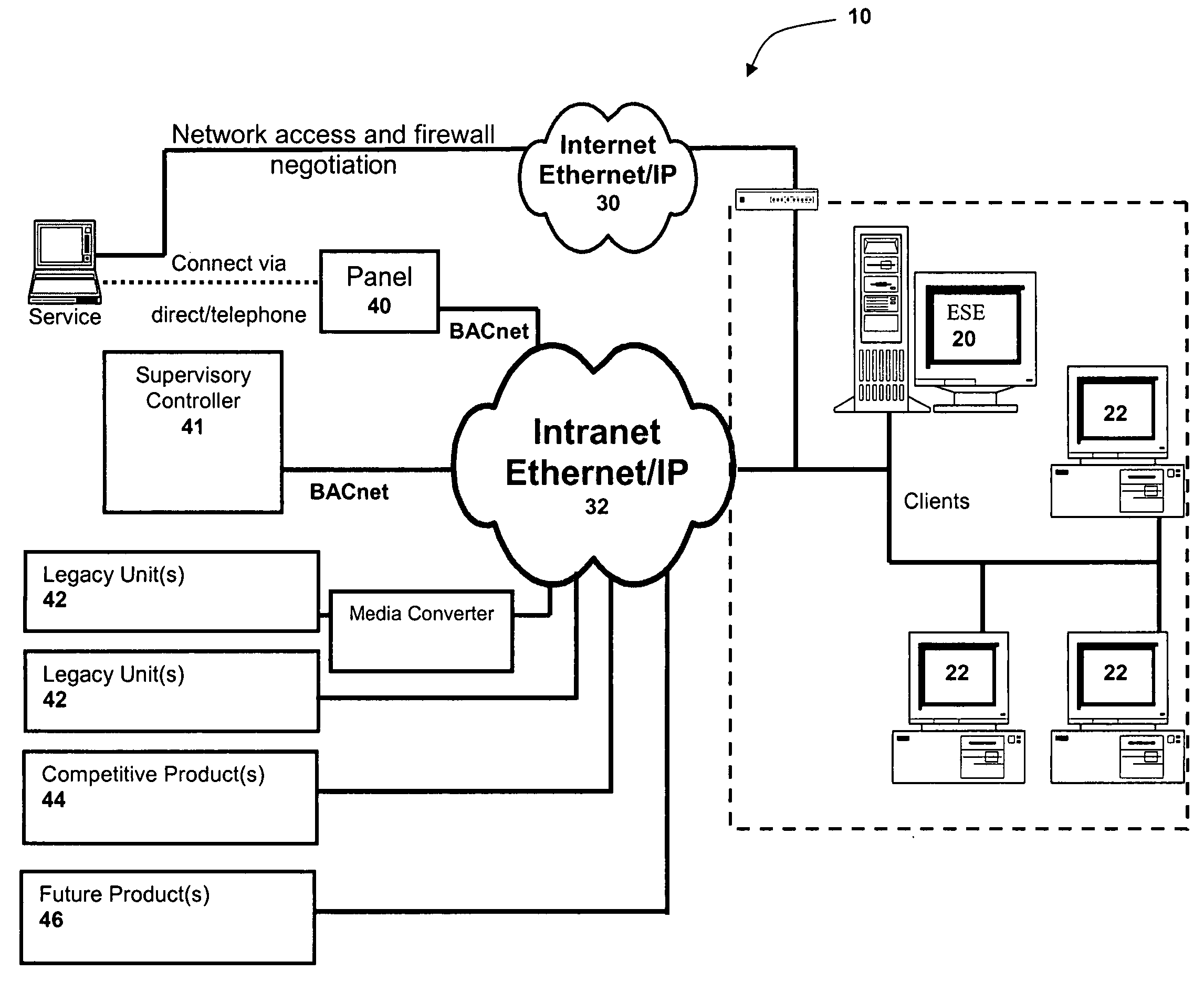Building automation system facilitating user customization
a technology for building automation and user customization, applied in the direction of electric controllers, instruments, ignition automatic control, etc., can solve the problems of increasing the cost of such systems, requiring extensive customization, programming and other installation elements, and contributing to the cost of time-consuming installation
- Summary
- Abstract
- Description
- Claims
- Application Information
AI Technical Summary
Benefits of technology
Problems solved by technology
Method used
Image
Examples
Embodiment Construction
[0053]The present invention relates to systems and methods for interacting with and customizing a dynamically extensible and automatically configurable BAS. In one embodiment, user customization options are presented by and accomplished through a graphical user interface. In addition to providing a portal through which users may access, manage, and customize the BAS, the user interface itself is customizable in accordance with and complimentary to the dynamic extensibility of the system. For example, in one embodiment when an enterprise server engine of the BAS discovers new objects, the user interface can be customized automatically or selectively at a user's direction. The user interface also allows the user to customize the hierarchical directory of sites or buildings. The sites or buildings are searchable from the user interface and the results of searches can be used to then customize the directory. The user interface also comprises a dashboard display in one embodiment to pres...
PUM
 Login to View More
Login to View More Abstract
Description
Claims
Application Information
 Login to View More
Login to View More - R&D
- Intellectual Property
- Life Sciences
- Materials
- Tech Scout
- Unparalleled Data Quality
- Higher Quality Content
- 60% Fewer Hallucinations
Browse by: Latest US Patents, China's latest patents, Technical Efficacy Thesaurus, Application Domain, Technology Topic, Popular Technical Reports.
© 2025 PatSnap. All rights reserved.Legal|Privacy policy|Modern Slavery Act Transparency Statement|Sitemap|About US| Contact US: help@patsnap.com



